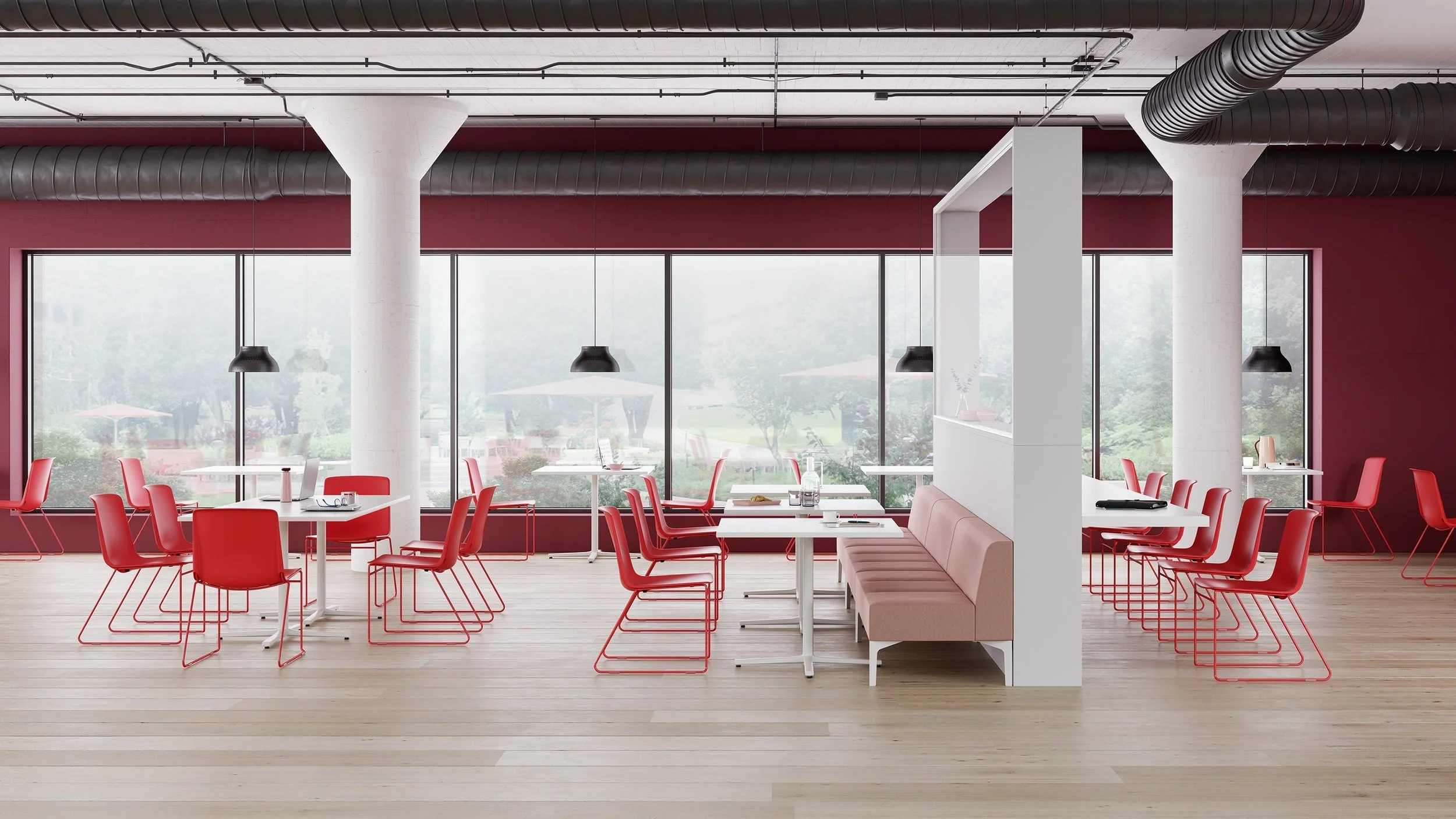Stacking chairs are one of the world's most unassuming objects. They are used nearly every day without a second thought—unless, that is, if they are poorly designed. Too heavy and they are frustrating to lift. Too light and the sitter fears it breaking. Too ornate and the room is cluttered. Too boring and the room becomes sterile. It appears these simple pieces aren't so simple after all—a challenge the design team at Herman Miller met head on with their latest project, the Pronta stacking chair.
“Stacking chairs, while simple in function, are complex to create," says Joe Van Faasen, Design Director at Herman Miller. "The chairs naturally must be durable, uncomplicated, and compact. However, even slight modifications, like the angles of the legs or the shape of the seat, make a marked difference between the chair appearing welcoming and inviting or cold and rigid when viewed as a sea of 100 uniform chairs grouped together in a room."
As the team worked to build Pronta, Van Faasen gave the chair a relatively square back, with a clean profile outlined by slightly curved edges. While appearing straight from the front, the legs are rounded at the corners, playfully sweeping along the dip of the seat and finishing with a diagonal stretch toward the ground. The vertical legs are also parallel with each other, specifically designed to emanate harmony whether the chair is standing alone or in a group. The sculpted seat is comfortable and flexible— a single, unbroken piece of lightweight polypropylene that offers support to a wide range of users, seamlessly accommodating the various ways people sit in chairs.
"Pronta sits squarely in the middle between expression and quietness," says Van Faasen. "These sorts of products are rarely used alone, leading us to create a gentle, crisp silhouette that communicates balance and visual continuity when grouped together. We strove for colors and details that make it distinct yet not overpowering when repeated again and again in a space."
Pronta is Herman Miller's first stacking chair to be dipped in color, offering smooth, monochromatic color options with the opportunity to mix and match colors between the legs and the chair itself. The polypropylene shell ensures the chair is light yet durable, and its straightforward construction validates that preparing the chair for recycling at end of life can be done with ease. The unique construction of the legs further aids the durability of the chair, as each leg fits snugly into deep rod pockets that extend upward capturing the back support and minimizing the need for extensive mechanical attachments. The choice of using a polypropylene shell also elevates the hygienic properties of the chair, as the entire surface of the chair is wipeable.
While durability and ease of use were critical considerations for the construction of the chair, the team also completely redesigned the cart accompanying the chairs. Instead of requiring users to stack chairs in a single, tall stack, the team created an easily maneuverable cart that stores two stacks of 18 chairs opposite each other for a total of 36 chairs per cart. The carts significantly reduce the amount of reaching users need to exert when removing chairs or restacking them for storage. Alternatively, Pronta can be stacked in columns of 10 on the floor.
"Simple things are often the hardest to construct," says Van Faasen, "But when executed correctly, they allow the sophistication of the process to shine."

